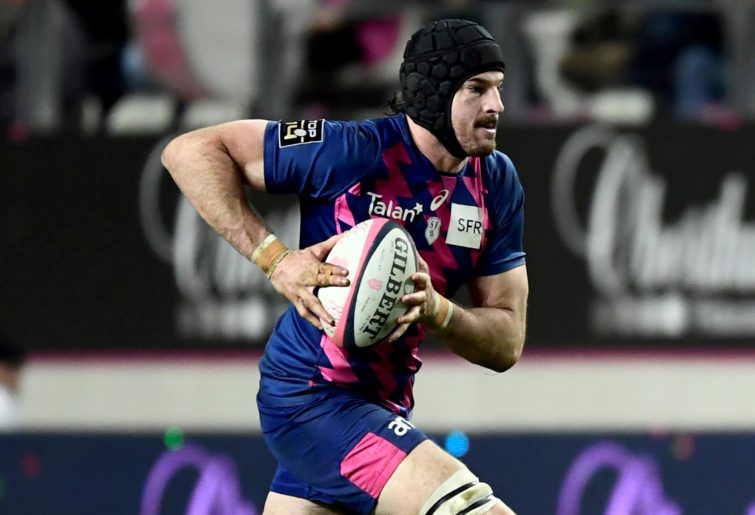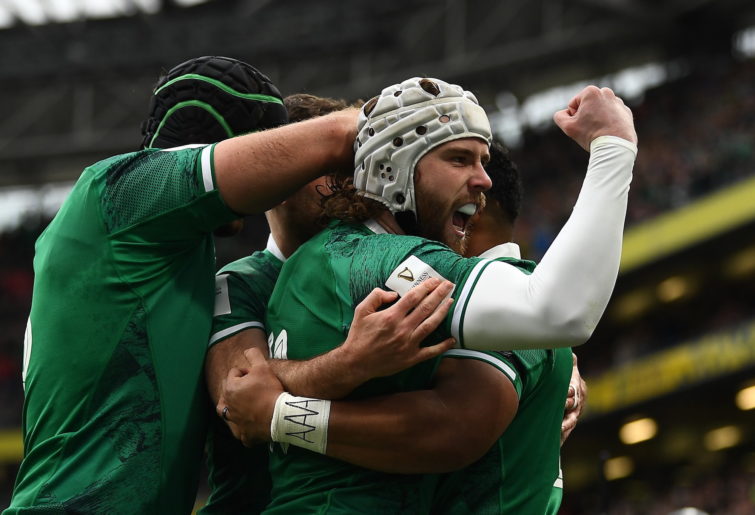Waratahs capitalise on refereeing confusion to upgrade a penalty goal into a converted try
Tane Edmed was lining up a shot at goal when he was informed that the officials got the mark wrong. The Waratahs instead changed…
Opinion
Part 1 dealt with how Super Rugby can bring in transfer fees, by doing certain things with player contracts. With the reduction of the French salary cap planned for 2024, and transfer fees not seen as part of wages it is the ideal time to strike. This article we will only focus on the positives of transfer fees for Super Rugby.
This summer Liverpool purchased Darwin Nunez for €75 million, with an additional €25 million if certain milestones are reached. This was not just merely a player moving from one club to another, but the arrival of a top young player, at the top of the table.
It was a five-year journey, starting off in the Uruguayan league, coming through Iberia, and finally ended up at one of the elite clubs.
Like many rugby players at 23, Nunez has moved up the ranks to find himself at the top. If he had been a young rugby player, it may have taken him six years, as he signed two-year deals in the SLAR, Pro D2, low English or URC team, before arriving in the Top 14. The big difference is that in soccer each of the three clubs received reimbursement for their part in developing him.
One thing that Super Rugby has is players of a good standard. One thing they are missing is money. Having fees will allow the first to provide the second. If soccer has taught us anything, it is that the smaller leagues will only survive by being given money by the bigger leagues.
Because of the transfers of Nunez, the Premier League transferred €6.7 million to Uruguay, €33.3 million to Spain and €41.7 million to Portugal to support soccer.

(Photo by Michael Regan – The FA/The FA via Getty Images)
On the other hand, the Top 14, Premiership, URC and Pro D2 have paid nothing for 99.9 per cent of their players. There are about 635 players who are in the URC, Premiership, Top 14 and Pro D2 that are not from the Six Nations countries or South Africans playing in South Africa.
These figures change during the year but at the time of writing the breakdown was roughly as follows: South Africa 147, New Zealand 99, Fiji 80, Argentina 65, Australia 59, Georgia 46, Samoa 36, Tonga 31, rest of Europe 29, Americas 21, Africa 20, Pacific 2. This is only 27.5 per cent of the players in the four leagues.
If each nation had received on average $25,000 for each player, the values would be: South Africa $3.7 million, New Zealand $2.5 million, Fiji $2 million, Argentina $1.6 million, Australia $1.5 million, Georgia $1.1 million , Samoa $900,000, Tonga $775,000. In the Top 14 the average salary is estimated to be about €240,000 ($370,000), so fees more realistically would be $250,000 on average.
These figures might seem pie in the sky but they are calculated on a few things, including the revenue of the European leagues. While soccer may seem a different sport you can draw some commercial realities from it.
If transfer fees came in overnight, clubs would have a real asset which they can leverage against. Bigger clubs like Bristol Bears, who have almost as much revenue as the second and third clubs in England combined, would happily spend money to get in players.
Positive 1 – Smaller gap between the European leagues and Super Rugby
The Premier League paid clubs outside of England over €1.3 billion this summer to purchase players. Total income for the league in 2021-22 is about €6.3 billion. This means about 20 per cent of the income of the Premier League was used to buy in players from outside England. There are transfers going the other way, but 10 per cent would not be an unreasonable net spend for clubs.
Currently the Top 14 is the biggest league in the world of club rugby, by a country mile. They have the highest attendance per game, most TV viewers per match, highest revenue per team, highest wage cap, and largest TV deal per season.

(Photo credit: Miguel Medina/AFP via Getty Images)
There is no market for club rugby on a par with France or with the Top 14. In the 2018-19 season the average revenue of a Top 14 club was €34 million; the premiership was €21 million. It is harder to work out other leagues due to blurred lines between club and union income and expenses.
This means the Top 14’s total revenue was €475 million in the 2018-19 season and the Premiership was €275 million Premiership’s revenue was €300 million for 2021-22 with a growth of 9 per cent. Based on the recent record TV deal, 10 per cent growth would seem reasonable, putting income at €520 million. If five per cent of the Top 14 income was spent on transfers to non-French clubs, it would put the annual spend at €26m million.
Due to economic pressure and the standard of players, I would expect at least half to go to Super Rugby nations, resulting in the Top 14 transferring 2.5 per cent of its revenue each year to Super Rugby.
With the Premiership, URC and Japan also buying players that number could easily be $30 million per year. That is $2.5 million per team to provide better wages, while at the same time reducing the money available in the money leagues.
Positive 2 – Better financially run clubs
Benifica did not wake up one day and find they had players worth €500 million that they could sell over five years. They happen to be in a league that is able to produce good players due to the standard of the teams.
Super Rugby already have this so no extra money is needed. However, Super Rugby teams would not be seen on the same level when it comes to being economically well run. It is something that Rugby Australia, New Zealand Rugby Union, the Pacific Island unions and all their affiliates would not be known for.
Currently Test teams are the only team that matter, as they bring in the money. If they run out of money in 10 years it’s someone else’s problem. Because of this, large amounts have been spent on having the test team as good as possible while hindering or even harming Super Rugby and the development pathways.
Realistically, as long as the team is successful on the pitch that is all that matters, because that is all they sell.
Benifica spend money on one of the top scouting networks in the world, bringing players from all over the globe to them. Each player they sell pays for the system to continue, while also helping on the pitch.
Benifica get good money from the Champions League because they have good players. Super Rugby is one of the best places to look for talent. Only South Africa can compete with the standard of player in those numbers.
If Super Rugby teams make their money from selling all kinds of players, they will produce all kinds of players. Uini Atonio is not really a Super Rugby-type player, but has made it to the top via La Rochelle. They did not sign him to be a French international, they signed him because he was what they wanted.
Mack Hansen went from struggling Super Rugby player to winning more games in New Zealand at international level than most of the current Australian squad.

(Photo By Harry Murphy/Sportsfile via Getty Images)
Right now, academies are about producing a few players each year to cover players that are leaving. If they are given 20 kids, they know only about 25 per cent need to succeed, so those who develop slower are pushed aside.
Those who aren’t going to be a Super Rugby-type player may not even make it. If the academies were responsible for producing 10 players a year with half being sold, the academies would need to adjust how it works for the better.
The Portuguese, Dutch and Belgium football leagues earn nearly as much from transfers as they do from TV income. This means player development is as important as results. Each player kept and sold would need to be justified. No longer could management at any level just respond there wasn’t enough money. This would result in one player leaving to support a lot more, rather than the opposite currently.
Positive 3 – More funding for grassroots and developing top clubs
While many players leave Super Rugby to go to Europe, there are also those who go from the Hospital Cup, Shute Shield, NPC and Heartland Championship. In a previous article, I highlighted how players are leaving from these leagues. Fees would result in European and Japanese money flowing into these competitions, creating a new revenue stream.
The unions would be able to reduce money going to these competitions and instead allow Super Rugby buy players off these teams. This forces these teams to produce better players, and losing players to Super Rugby would now be a windfall. Over time certain clubs would become like Benifica, producing good players, allowing them to compete with Super Rugby teams, and also have the finances from the fees they receive.
No longer would we have to worry about adding teams but the best-run grassroots teams would naturally appear. Yes, some teams will struggle but that happens now at all levels as eager boards look to leave a legacy regardless of the costs.
Positive 4 – Youngsters choosing union over league
In the heartland of Australian rugby there are two competitions feeding into just two Super Rugby teams. If young players want to play, they may need to move to another Super Rugby team. They do however have a second choice which is league and the NRL. There are currently 13 teams and affiliated pathways in the same area. What kid is going take the choice they are seven times less likely of succeeding in?
By allowing clubs in the Hospital Cup and Shute Shield to invest money in having academies as good as the NRL and Super Rugby, you will be able to compete with league. Players will see that while league is big in Australia it is the baby brother of union worldwide.
Yes, the NRL is bigger than Super Rugby but if you fail in the NRL you don’t have many choices. Union, on the other hand, has more money available for the best players and more choices for players not good enough.
Better young players can have it written into their contract that they get 20 per cent of any transfer fee while average players can have 10 per cent written in. This would allow teams to increase what they can offer players.
In Part 3 we will look at the negatives.